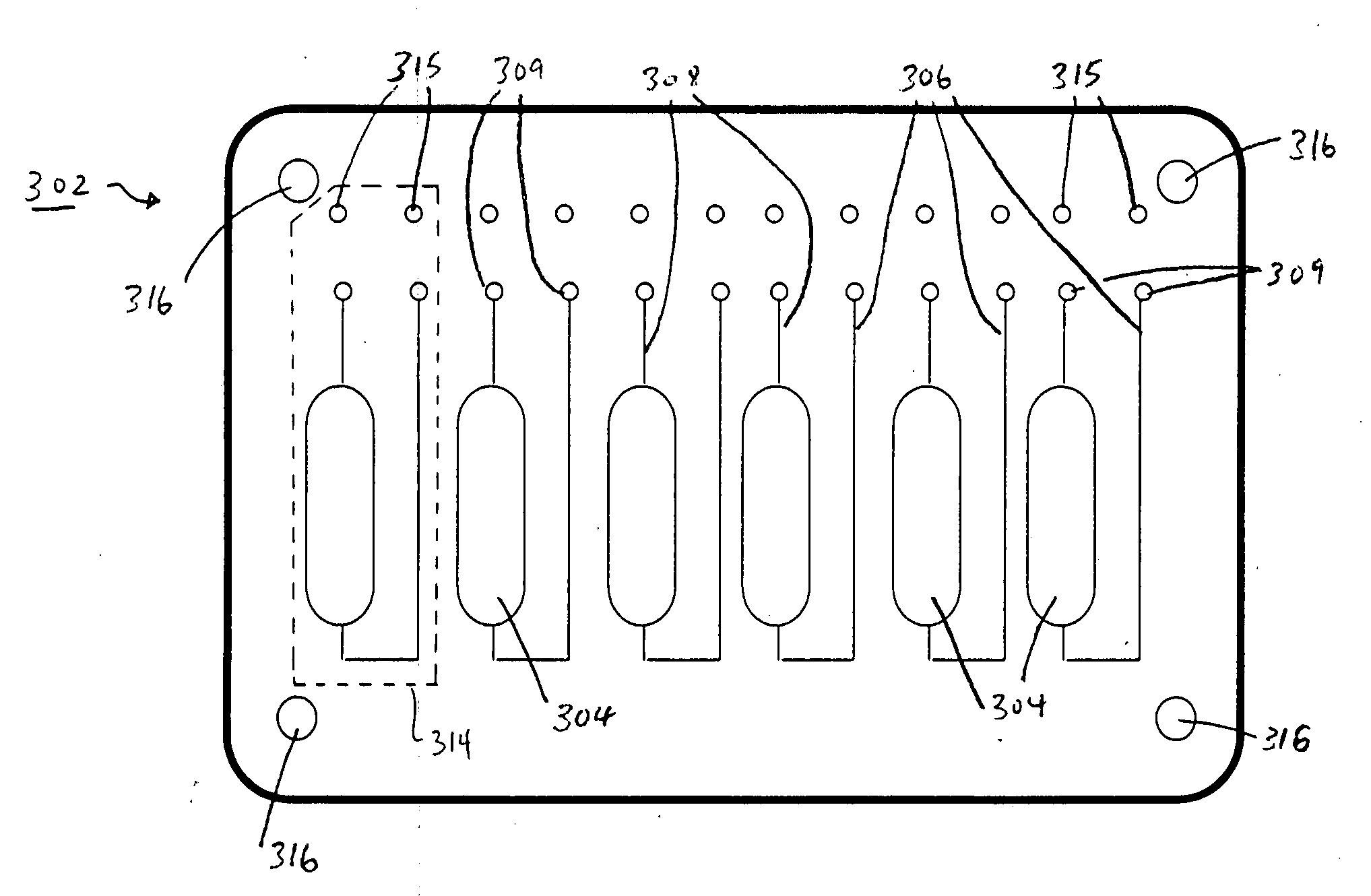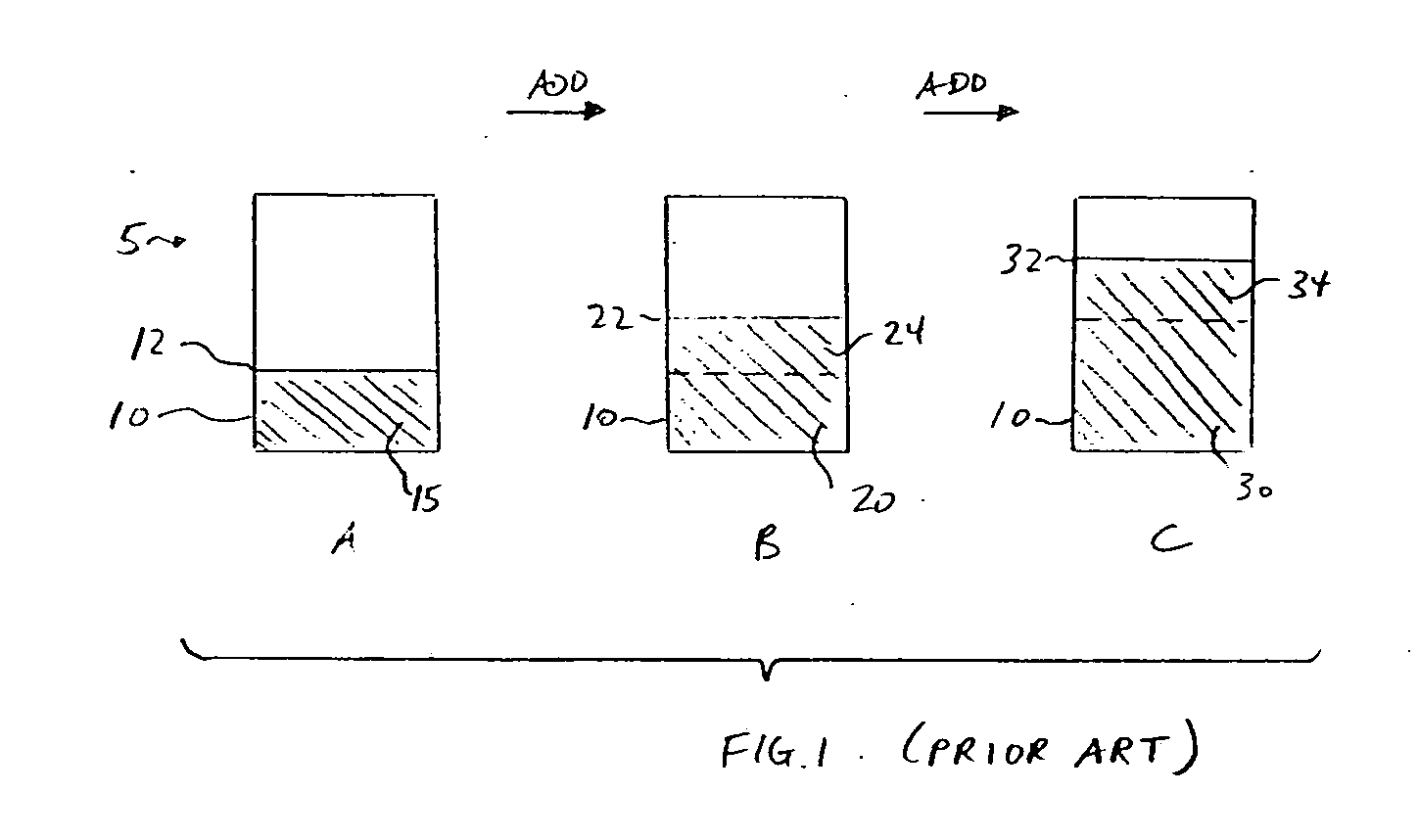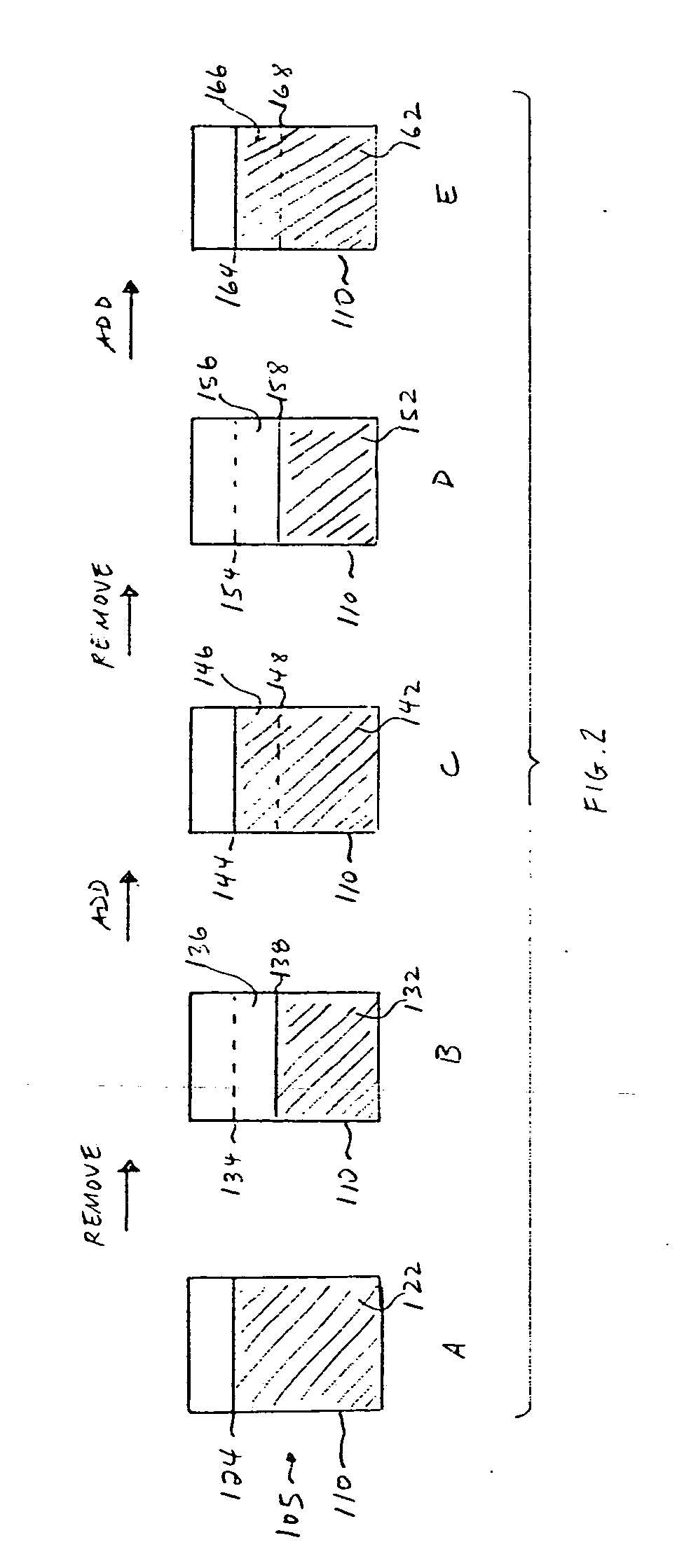Method for performing fed-batch operations in small volume reactors
a technology of small volume reactor and fed-batch, which is applied in the direction of laboratory glassware, chemical/physical/physicochemical processes, fermentation, etc., can solve the problems of reducing or altering yield, shortening the cell lifetime or even upseting the reaction process, and affecting the health and/or productivity of cells, so as to achieve constant level of shear.
- Summary
- Abstract
- Description
- Claims
- Application Information
AI Technical Summary
Benefits of technology
Problems solved by technology
Method used
Image
Examples
example 1
[0125] This example shows a comparison between a standard fed-batch process and a substantially constant volume fed-batch process according to certain embodiments of the invention. A standard fed-batch culture of Chinese hamster ovary (CHO) cells was preformed in a reaction site of a shake flask. Under standard fed-batch conditions, the initial reaction site volume was 76% of the final volume. The final reaction site volume was 25 mL. There were four feeds on days 1, 3, 5, and 6 of the culture in which cell nutrients were added to the reaction site. Each feed was 8% of the initial volume. Accordingly, the initial volume of the flask was 19 mL and each feed was 1.5 mL.
[0126] A substantially constant volume fed-batch process was performed in a reaction site of a shake flask. The initial and final volumes in the reaction site were 25 mL, and there were four feeds on days 1, 3, 5, and 6 of the culture in which cell nutrients were added to the reaction site. During the days of feeding, ...
example 2
[0129] This example shows a comparison between a standard fed-batch process and a substantially constant volume fed-batch process performed in microbioreactors according to certain embodiments of the invention. The feeding strategy was similar to that in Example 1 but the final volume of the reaction mixture was 620 microliters. The associated volumes for this experiment are given in the table below.
“Substantially constant volume”Standard Fed-batchfed-batchViVfeedVfViVremovedVaddedVfDay(μL)(μL)(μL)d(μL)(μL)(μL)(μL)04710471062000620147137.2508.20.07362045.445.46202508.20508.20620006203508.237.2545.40.06862042.342.36204545.40545.40620006205545.437.2582.60.06462039.639.66206582.637.2619.80.06062037.237.26207619.80619.8062000620
[0130] The results of this experiment are shown in FIG. 7. In this case, the results of the two methods were different because in the standard fed-batch method, the initial volume of fluid in the microbioreactor was well below the optimal value for good cell gr...
PUM
 Login to View More
Login to View More Abstract
Description
Claims
Application Information
 Login to View More
Login to View More - R&D
- Intellectual Property
- Life Sciences
- Materials
- Tech Scout
- Unparalleled Data Quality
- Higher Quality Content
- 60% Fewer Hallucinations
Browse by: Latest US Patents, China's latest patents, Technical Efficacy Thesaurus, Application Domain, Technology Topic, Popular Technical Reports.
© 2025 PatSnap. All rights reserved.Legal|Privacy policy|Modern Slavery Act Transparency Statement|Sitemap|About US| Contact US: help@patsnap.com



